Waec biology practical questions 2022
Here is the waec biology practical questions
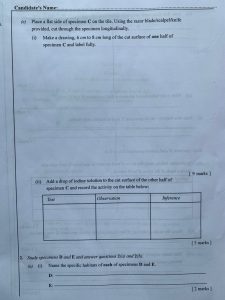
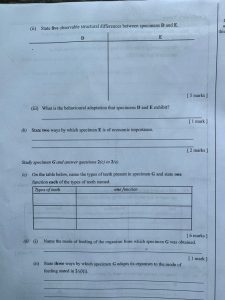
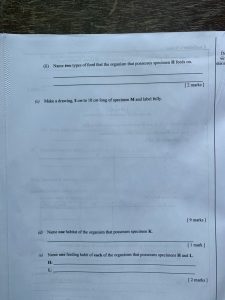
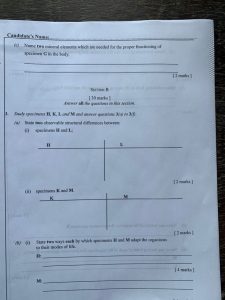
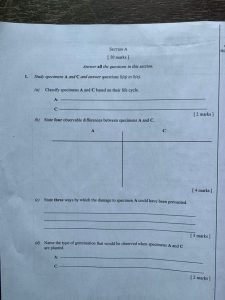
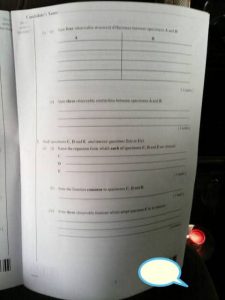
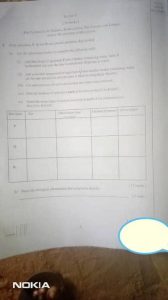

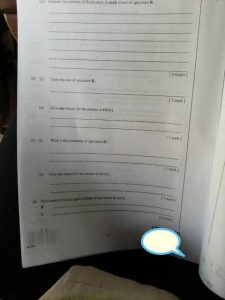
*Specimen H:* Head of domestic fowl (complete) and Specimen L: Head of Duck (complete)
The phylum of Specimen H and L is Chordata and the class of Specimen H and L is Aves
1. (i) Name the habitats of each of specimens H and L.
Specimen H a common environments for include savannas, woodlands, desert, plains, semidesert, dry grasslands and scrubs. .
*While*
Specimen L are found in wetlands, marshes, ponds, rivers, lakes and oceans because they are mostly aquatic birds, and may be found in both fresh water and sea water.
👉 *Mode of Feeding of Specimen H and L*
They are omnivorous and will eat grass, aquatic plants, insects, seeds, fruit, fish, crustaceans and other types of food.
(ii) Name the class to which of each of specimens H and L belong *
They both belongs Aves
(iii) Observable features that adapt specimen L to its habitat
Ducks possess an oily coating that keeps water from settling in their feathers, helping them in staying dry and keeping themselves warm.
Their webbed feet, designed like paddles, provide more surface area to push against the water and help them swim.
The comb-like structure, called pecten, present along the edge of their beak is adapted to hold slippery food and to preen feathers.
They have specialized flat beak suitable for searching insect larvae and pulling small mollusks, worms, and waterweed out of the mud.
(iv) Behavior Features of Specimen L to its Habitat
Dabbling ducks take their food on land or the surface of the water, or by reaching as deep as they can without completely submerging. Sea ducks and diving ducks, on the other hand, feed by diving deep underwater.
To keep themselves clean, ducks often preen themselves by pushing their heads and putting their bills into the body.
They make different types of calls, including cooing, whistling, grunting, and yodeling. Scaup, for example, makes a call that sounds like ‘scaup’ whereas the mallard makes the typical ‘quack’ sound and another rough noise called the ‘breeeeze’.
Specimen L migrate during the winter months to somewhere warmer.
(v) Reproduction of Specimen L
Sexual Reproduction and they lay eggs, the eggs usually hatch about 28-35 days after the beginning of incubation.
(vi) Drawing Diagram of Specimen L
Specimen L head of duck sketch
(vii) Observable features that adapt specimen H to its habitat
The present comb, beak, wattles, ears, earlobes, eyes, eye rings
(viii) State three observable similarities between specimens H and L:
Present of beak
Present of eyes and nostril
Present of ear
(ix) State three observable differences between specimens H and L:
Specimen H
Present of crown
Absent of wattles
Present of bean
Are found in wetlands, marshes, ponds, rivers, lakes and oceans because they are mostly aquatic birds, and may be found in both fresh water and sea water
Specimen L
Present of Comb
Present of wattles
Absent of bean
Common environments for include savannas, woodlands, desert, plains, semidesert, dry grasslands and scrubs.
2. a (i) Identify the sex of specimen H and L
Female
(ii) State one reason for the answer in 2(i).
Present of comb and crown
b (i) Drawing Diagram of Specimen H
Diagram of Specimen H
Specimen J: Quill Feather
Kingdom and Class of organism from which specimen J/quill feather could be obtained
Kingdom Class
Animalia Aves
(ii) Location on the body of organism from which specimen H/quill feather could be obtained
Wing(s)/tail(s)
(iii) Example of organism from which specimen J/quill feather could be obtained
Pigeon/domestic fowl/cock/hen/dove/vulture/ostrich/gull/duck/any correctly named bird.
(iv) Functions of specimens J to the organisms that possess them
Flight/flying;
Insulation;
Camouflage;
Sexual/courtship display;
Protection;
Waterproof;
Identification;
Gives shape
(vi) observable Features that Adapt Specimen J to Its Habitat
Specimen J
Strong and firm; to beat against air/wind/protection/insulation;
Hollow shaft/rachis/light weight; for buoyancy;
Interlocking barbules/closely packed barbs; for upthrust;
Colour; for camouflage/courtship display/identification;
Glossy surface; for waterproof. other features are below
Barbs present
Vanes present
Vein absent
Shaft/rachis present
Midrib absent
Petiole absent
Smaller in size
Sharp margin absent
Non-green in colour
Barbules present
Calamus present
Inferior/superior umbilicus present
Aftershaft present
Barbs are diagonal
Blunt end
Short barb(s)
Specimen D – Soldier termite (dead)
i) What Kingdom and Class of organisms do specimens D and E
Specimen D – Soldier termite (dead)
Kingdom Class Phylum
Animalia Insecta Arthropoda
ii) Mode of feeding of Specimen D
Specimen D possess strong mandible and maxillae (mouth-parts) which enable them to bite and chew plant parts. Therefore their mode of feeding Biting and Chewing
iii) Economics Important of Specimen D
Insect pests destroy woods in the home through their biting, and chewing activities
They are used as food by humans or are fed to livestock
They are important in nature as decomposers and recyclers of tropical and subtropical dead wood
They increase the cost of production during the course of controlling them
They render vegetables and fruits unattractive and unmarketable
Termites do not carry disease and don’t usually bother buildings because there is not enough water in the wood.
Prevention and Control of Specimen D
To avoid dampwood termites, make sure water drains away from your house.
Replace any damp or damaged wood on the outside of your home.
iv) Life Cycle of Specimen D
The life cycle of specimen D is a incomplete metamorphosis stage or life cycle which are from egg, to nymph, and to adult.
Diagram of Specimen /Termite
Specimen Termite
v) Name of the habitats of Specimen D
Specimen E usually live in damp, dying wood or in houses with leaking plumbing that keeps the wood wet.
vi) Observable Features of Specimen D that Adapt Specimen D to Its Habitat
– Body covered with exoskeleton made of chitin;
– Body up of head, thorax and abdomen/3 – body division;
– Presence of jointed appendages;
– Head bears a pair of jointed antennae;
– Thorax made up of 3 segments/pro-thorax and meta-thorax;
– Thorax bears one or two pairs of wings;
– 3 pairs of jointed legs;
– Abdomen is segmented;
– Presence of spiracles on abdomen.
Structural differences between Queen Termite & Soldier Termite
TABULATE
A/Queen-
Distended/large abdomen
Small head
Mandible absent
Conspicuous spiracles
Patches of hardened cuticle present
Eye present
B/Soldier-
Small abdomen
Large head
Presence of powerful mandibles
No spiracles seen/invisible spiracle/spiracles absent
Patches of hardened cuticle absent
Eye absent
Observable adaptive features of
Queen Termite
– Presence of eye; to see
– Large/distended abdomen; to carry many eggs
Soldier Termite
Presence of antenna; to detect intruder/changes in the termitarium;
Large/powerful mandibles; for defence/offence.
Specimen E – Honeybee (dead)
i) What Kingdom and Class of organisms do specimens E
Kingdom Class Phylum
Animalia Insecta Arthropoda
ii) Mode of feeding of Specimen E
The mouthparts of Specimen E are chewing and lapping type.
iii) Life Cycle of Specimen E
The life cycle of specimen E is a complete metamorphosis stage or life cycle – Which is from egg to Larvae to pupa to Adult
iv) Name of the habitats of Specimen E
prefer to live in gardens, woodlands, orchards, meadows and other areas where flowering plants are abundant.
vi) Economics importance of Specimen E
Some are carriers or vectors of diseases
The profits of farmers are reduced
They reduce the quality of produce either in the store or in the field
They generally reduce the yield of crops
They can also cause total death of crop plants
Diagram of Specimen E/Honeybee
Specimen – Honeybee
iv) Observable Features of Specimen E
They have a hard outer shell called an exoskeleton.
They have three main body parts: head, thorax, abdomen.
They have a pair of antennae that are attached to their head.
They have three pairs of legs used for walking.
They have two pairs of wings.
Observable Features of Specimen E that Adapt Specimen E to Its Habitat
Head Location of the eyes, brain, where the antennae attach.
Present of weak Mandibles outer mouthparts that help protect the proboscis.
Present of weak Proboscis Tube-like mouth part used to suck up fluids.
Closed Ocelli One of two types of insect eyes used to detect motion.
Dead Eye (Compound) which is made of many light detectors called ommatidia.
Present of dead Antenna segmented feelers that detect airborne scents and currents.
Thorax Midsection where the (6) legs and wings attach.
Absent of Forewings Wings closest to the head ( dead honeybee).
Hind Wings Wings farthest from the head.
Forelegs Legs closest to the head.
Prevention and Control Specimen E
By Physical control
By Cultural control
By Biological control
(ii) State three similarities between specimens D and E
Both have the present of outer shell called an exoskeleton.
They have three main body parts: head, thorax, abdomen.
They have a pair of antennae that are attached to their head.
They have three pairs of legs used for walking.
They have two pairs of wings.
(iii) State two differences between specimens D and E (3 marks )
Specimen D
Their mode of feeding Biting and Chewing
The life cycle of specimen D is incomplete metamorphosis stage
Specimen E
Their mode chewing and lapping type.
The life cycle of specimen E is a complete metamorphosis stage
Specimen G – Lower jaw of a herbivore with teeth intact
What teeth does Specimen G have?
They have sharp incisors and wider flatter molars.
Location of Specimen G/Lower jaw of a herbivore with teeth intact
specimen G is located at the skull
Mode Of Feeding of Specimen G
Herbivores – eat plants and have sharp incisors and wider flatter molars. Specimen G have teeth which are shaped to squash and grind plants.
Example of organism from which specimen G/Lower jaw of a herbivore with teeth intact
Examples of specimen G include Rabbit, goat, deer, koalas, some birds, caterpillars, crickets, squirrels, cow, horse, tortoises, iguanas, grasshoppers, moths, and butterflies, birds, parrots and more.
Classification of Specimen G according to What they eat
Specimen G can be classified further into fruit-eaters (frugivores), seed-eaters (granivores), nectar-eaters (nectivores), and leaf-eaters (folivores)
How many teeth do Specimen G have?
They have three of teeth which are Incisor, Molar and premolar
Dental Formula of Specimen G
The dental formula for a rabbit is I-2/1, C-0/0, P-3/2, and M-3/3, = 28.
The dental formula of herbivores, like cattle that feed on fodder, is 2 x ( 033 / 433 ) = 32
Diagram of Specimen G
Specimen G – Lower jaw of a herbivore with teeth intact
Characteristics of Specimen G
They can bring back food to the mouth that they have swallowed previously for chewing it again. This helps them in absorbing the nutrients completely from any kind of food that is hard to chew. Examples include cows and camels.
They do not need to chew on their food at all. Their mouths are shaped in the form of a straw to help them suck nectar from flowers. Examples include moths and butterflies.
Sharp incisor-like front teeth are present in certain herbivores for them to gnaw and break down certain food items.
They can move their jaws in a sidewards motion, which helps them to eat.
Observable Features of Specimen G that Adapt Specimen G to Its Habitat
Special Teeth
The have flat-molars –
that they use to grind leaves, shoots, and twigs.
Premolars –
for chewing on food, while their front teeth help them tear larger plants apart, by tugging into them
that they use to crush their food into chewable sizes
large incisors –
They are used in clipping or tearing vegetation, but they may only occur on the lower jaw.
Alkaline Saliva
Herbivores have alkaline saliva, which means their digestion process is slower as compared to carnivores who have acidic saliva and start digesting food as soon as it is ingested. Also, the plants’ herbivores feed on, go through a preparatory process that makes them easy to dig𝗿𝗲𝗲
*MR EZE*🎓

